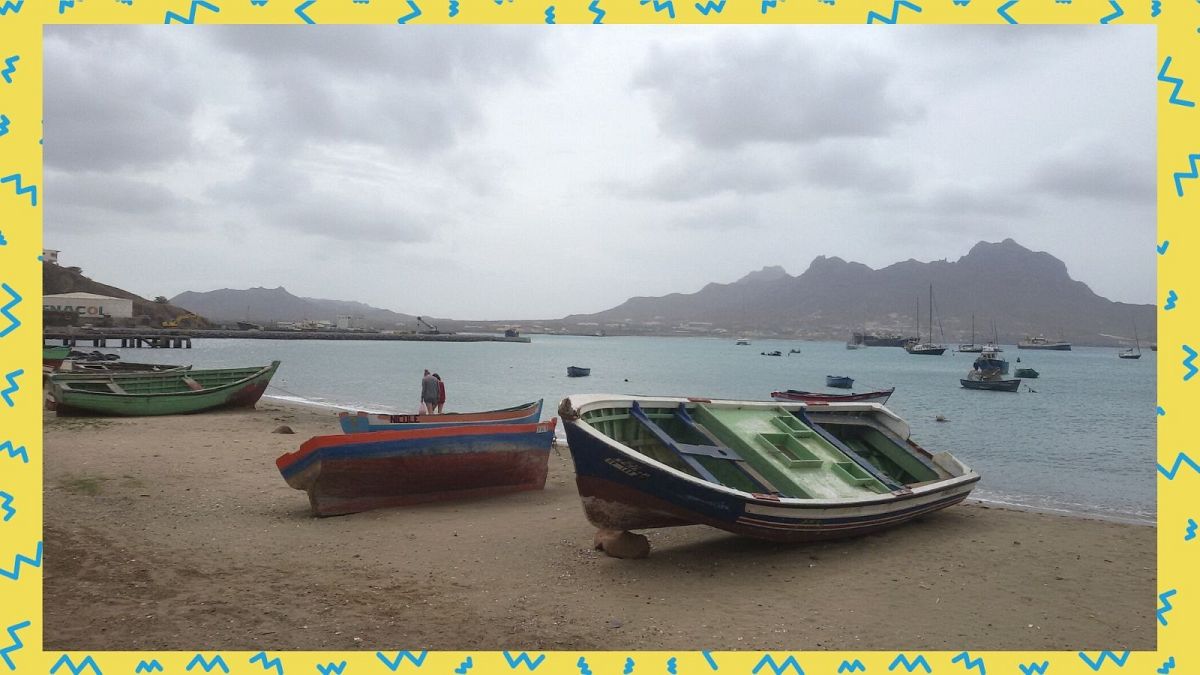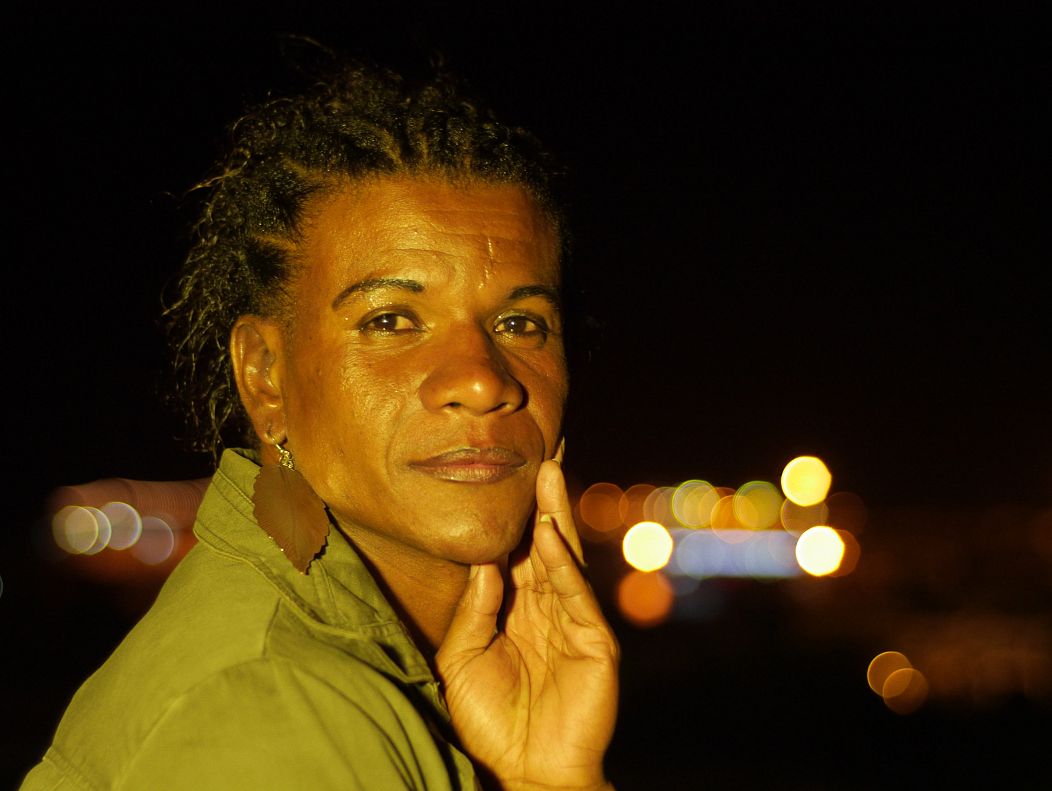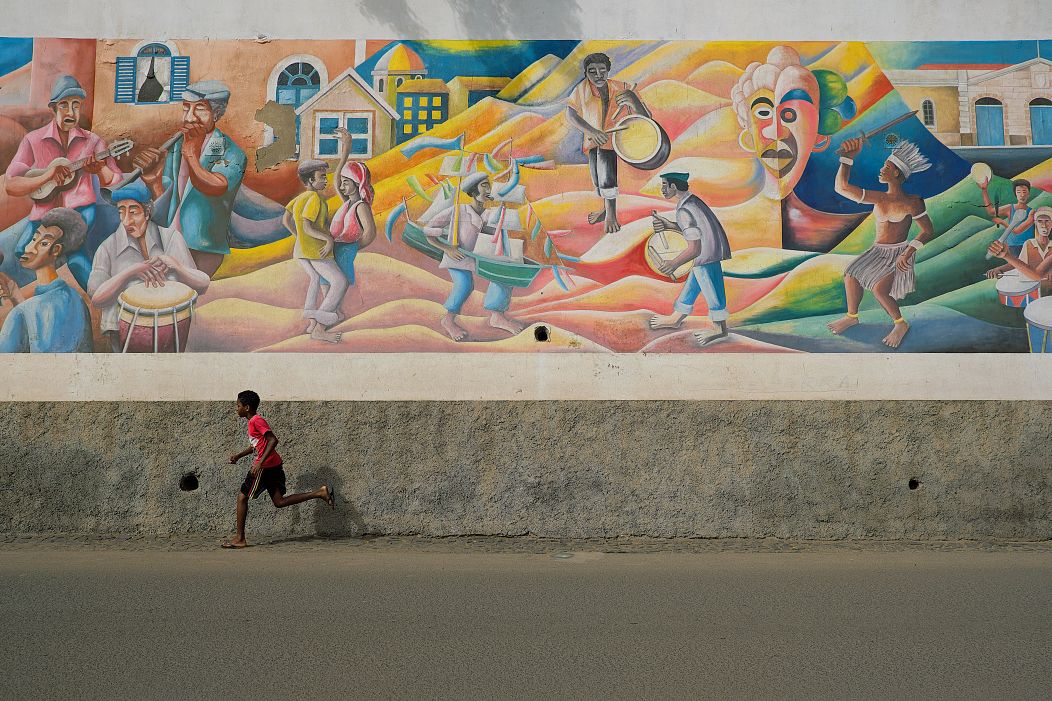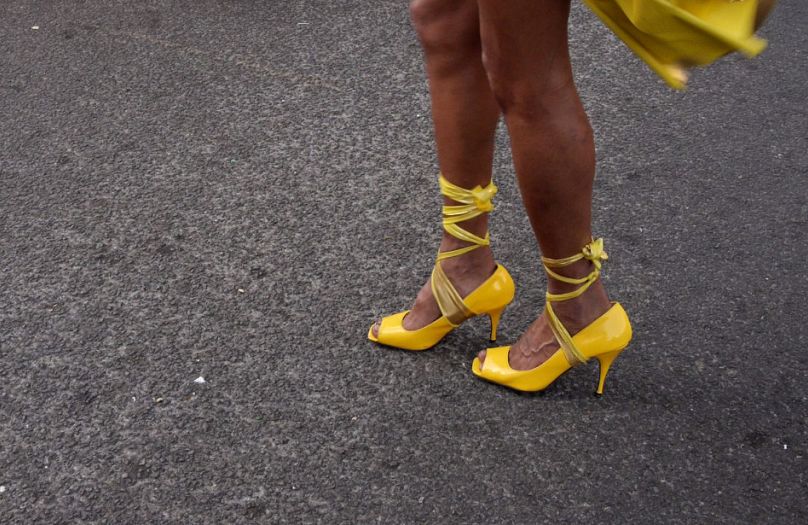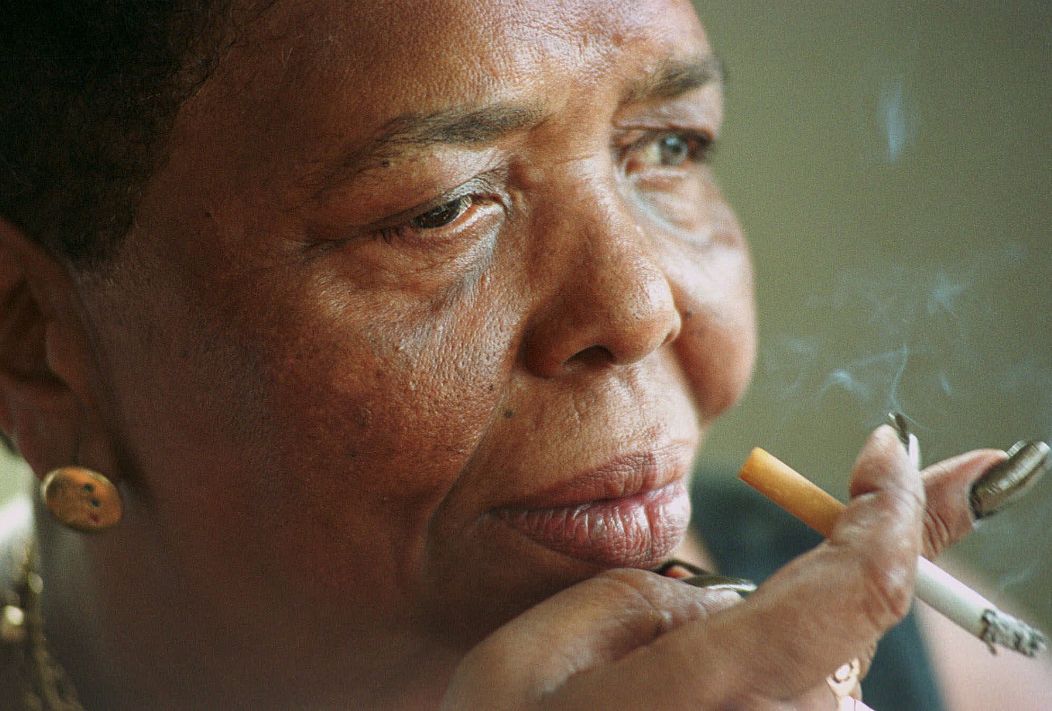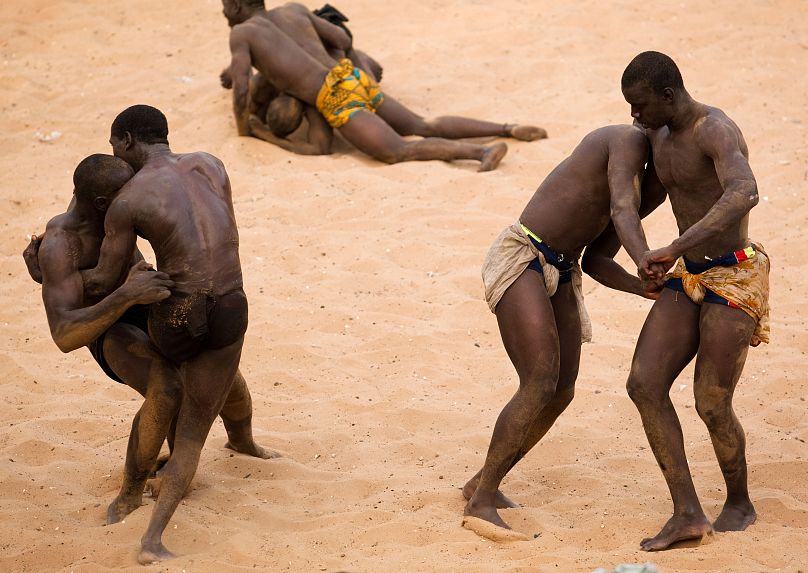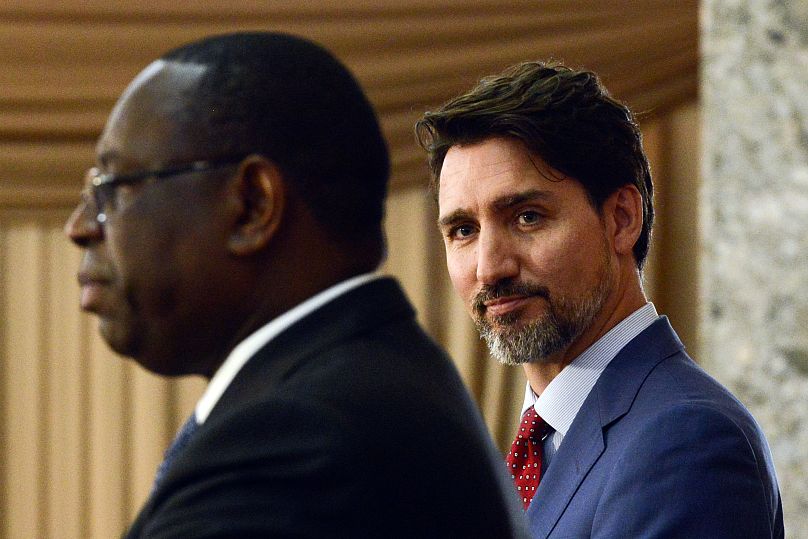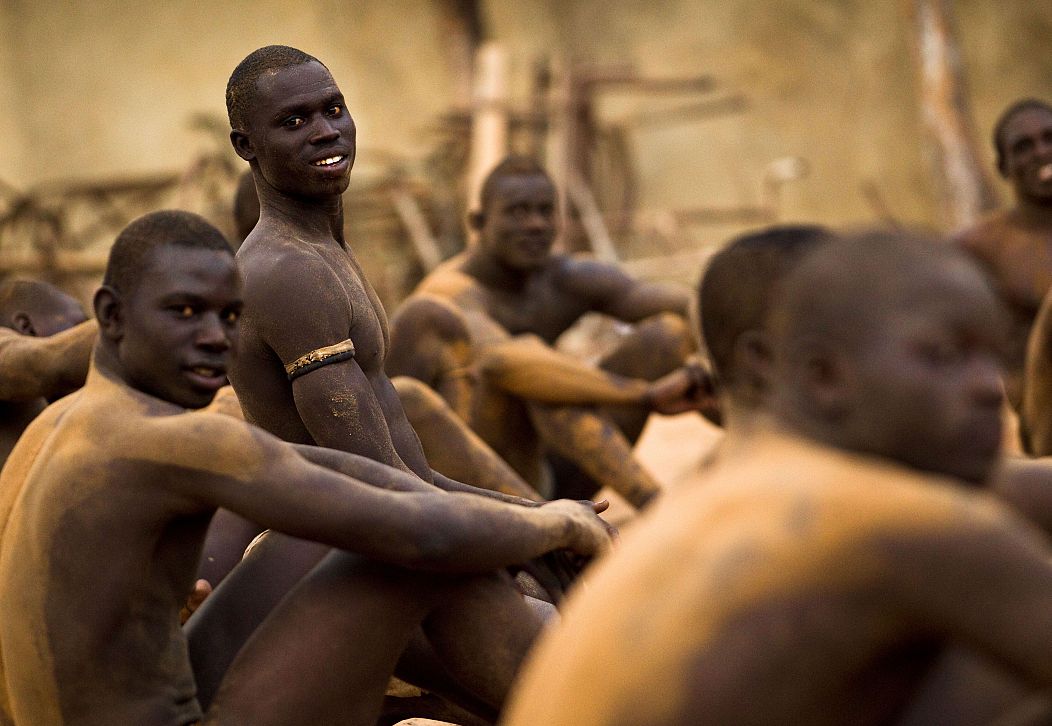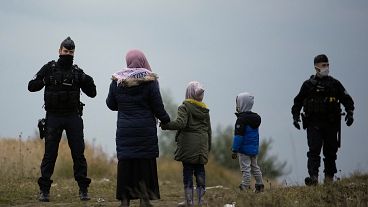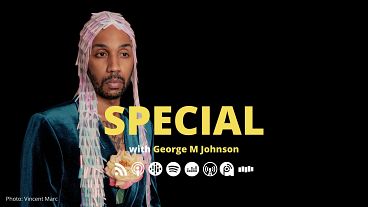How a small Cape Verde island became an LGTBI oasis in Africa
In the port city of Mindelo in Cape Verde, lives Tchinda Andrade, a trans woman in her thirties. Wearing a short skirt, she sells her Brasilian fritters in the streets in broad daylight. No one insults or attacks her #CryLikeaBoy
He never takes a taxi if he doesn’t know the driver. It is unthinkable for him to get on a bus. He lives outside Dakar, the capital of Senegal, in a small village where he feels safer. Yet his house once was burnt down. Sometimes he is assaulted.
He doesn't want to hide he is gay but sometimes has to live on the run because of threats. Although he does not want anonymity, we cannot publish his name for fear of further endangering his life.
This is the life of a gay man in Senegal, where since 1966, any man or woman caught in an “act of homosexuality” or “acts against nature” between two people of the same sex, risks a prison sentence of up to five years.
Many are forced into a life in the closet, constantly fearing discovery, says Sheba Akpokli, a Western Africa LGBTQI+ rights activist based in Togo.
She describes this as “being forced to conform, constant insecurity, fear of being outed, and always double-checking before going anywhere.”
But a short flight away, just off the coast of Senegal, things are very different.
In the port city of Mindelo on the island of Sao Vicente in Cape Verde, lives Tchinda Andrade, a trans woman in her thirties. Wearing a colourful dress or a short skirt, she sells her Brasilian fritters (bolinhos in Portuguese) in the streets in broad daylight. No one insults or attacks her. She is not afraid of ending up in prison. Cape Verde is ranked as the most LGTBI+ tolerant country on the continent, according to the Afrobarometer research network.
“There go the tchindas!”
In the streets of Senegal, gay people are targeted with the slur “góor-jigéen”, which literally means man-woman in the local Wolof language. A term that specifically belittles their masculinity.
In Cape Verde, trans women are labelled “tchindas”, due to Andrade’s fame. Yet the slang term is not derogatory but rather a way of acknowledging her role as a groundbreaker.
“Tchinda was the first to come out of the closet”, says Rosa Dos Santos, another Cape Verdean trans woman. When she walks in the streets of Mindelo with her friends, people say: “There go the tchindas.”
Edinha Pitanga, another “tchinda”, recalls sitting outside Andrade's house for hours as a teenager.
"What are you doing sitting here alone?”, Andrade asked her once.
Pitanga just wanted to observe her: she had been fascinated by her since her carnival appearance.
Andrade recalls how this episode shocked and changed Cape Verdean society.
It was the 1990s and she had already been dressing as a woman for a few years. Then came the annual carnival that would make her famous. As 90 women in colourful costumes paraded through the streets, she put on a woman's top and joined them.
“When I arrived in the city everyone was looking at me, even the police who were controlling the carnival parade,” she recalls.
“People were clapping and laughing.”
That carnival went down in history as the “Tchindaval”.
In countries such as Senegal, LGTBI people lack any sense of representation.
“In school they are a taboo, the laws do not defend them, the media are very homophobic, so people think there are no LGTBI people in their country,” says Marc Serena, co-director of the 2015 documentary “Tchindas”.
Any depictions of gay people are negative. For example, in many films made in Nollywood, the Nigerian film industry, the villains are shown as homosexual.
That’s why representation matters so much. And that’s what Tchinda Andrade and her “Tchindaval” has meant for Cape Verdean society.
Recalling her adolescence in the 1980s in the Senagelese capital Dakar, Marame Kane, a LGTBI rights defender now based in Paris, says she was brought up to see the world in absolutely binary terms.
“‘A couple is one man and one woman. We get married, we have children.’ And I was never told about sexuality”.
In the 1980s, in the French-speaking world, “we didn't have any role model, we didn't have any representation of what it is to be a lesbian, gay, bi or trans-LGBT person”, she says.
This only changed in 2004, when French channel Canal+ started airing the US series The L World, about a group of lesbian friends.
“That series shaped my early life as an adult,” Kane says.
Back in Mindelo, Pitanga recalls her coming-out: at the age of 12 or 13, she dressed as a woman for the first time, knowing she had predecessors who had already paved the way for her: Tchinda, Betina, Anita, Badia…
The African exception
Ten years ago, Serena travelled across 17 African countries collecting testimonies from the African LGTBI community for his book “ This is not African!”, originally published in Spanish.
He says what he saw in Mindelo was very different from the streets of Senegal, the nearest mainland.
"It is very difficult to see trans girls walking down the street in Dakar; they don't have the right to be visible,” he says.
“Many people from Senegal told me that when they go to Cape Verde and see Tchinda and her friends, they start praying in the middle of the street to counteract what their eyes see. It can be a big shock for the Senegalese.”
In sub-Saharan Africa, more than half the countries have laws prohibiting or repressing homosexuality.
“What we see in Africa is something that Europe got completely rid of in 2014, when Northern Cyprus became its last region to decriminalise consensual same-sex sexual acts,” says Lucas Ramón Mendos, a researcher and author of the State-Sponsored Homophobia report by the International Lesbian, Gay, Bisexual, Trans, and Intersex Association, based in Geneva.
But in Cape Verde, homosexuality is not illegal or punishable. On the archipelago, the fight for LGTBI rights has reached another level as activists are seeking to legalise same-sex unions.
Why has this African country become an exception on the continent? Serena points to factors including its natural isolation in the Atlantic Ocean. It is a small community where everyone has known each other since childhood.
Together, the “tchindas” of Mindelo have become a strong community that protects each other. “They have managed to hack the carnival, the most important festival in the country that lasts months, not just days,” says Serena.
Andrade and her friends have won a right that would be unthinkable in Senegal: to parade openly in front of their neighbours without fear of reprisals.
But the apparent freedom of the carnival is deceptive, Serena says.
The rest of the year, the “tchindas” face problems finding work and love. Wearing a dress and high heels means Andrade can only work as a street vendor.
“There is still a lot of prejudice,” she says.
She has fallen in love many times, but her boyfriends never want to go out with her in broad daylight. The taboo is still there.
Pitanga does not find it easy to find a job, either, and she wants to marry her boyfriend, but this is still illegal in Africa’s most LGBTI-tolerant country.
Hand in hand with women’s rights
Beyond the cultural specifics of Tchinda Andrade, the carnival, and the small, close-knit island community, the LGTBI tolerance in Cape Verde can be linked to its strong gender equality.
This is due to anti-colonialist leader Amílcar Cabral (1924-1973), says Claudia Rodrigues, a sociologist and former president of the Cape Verde Institute for Gender Equality and Equity.
Whenever Cabral liberated a territory and established a new local government he allocated a number of top roles to women.
“If there were three people in the government: at least one woman; if there were five: at least two women”, says Rodrigues.
After the former Portuguese colony became an independent country in 1975, Cape Verdean feminists pushed for women’s equality, and the impact of this can still be seen today.
The African Child Policy Forum (ACPF) 2020 report lists Cape Verde as among the most “girl-friendly” countries.
It legalised abortion in 1987 and female genital mutilation is banned.
“This movement for women's and human rights has helped us to be more open to a culture of non-discrimination,” says Rodrigues.
The women’s struggle has also served trans women, Serena adds.
Colonialism and the “real African man”
Several researchers link homophobia to a cultural rejection of traits considered feminine.
That is why people in Senegal insult gay men by calling them “góor-jigéen” or men-women: the purpose is to deeply hurt their virility.
“In recent decades, masculinity in Senegal has evolved in such a way that any sign of femininity has become dangerous, threatening to the male identity,” says Cristophe Broqua, a social anthropologist from the French National Centre for Scientific Research.
The idea that African men should be hyper-masculine and dominant only took root in the colonial era under the Portuguese and French, says Senegalese anthropologist Cheikh Niang.
He links this to the fierce opposition to European colonists from the queens in the historic kingdom of Waalo, now part of modern-day Senegal and Mauritania.
The Senegalese once had a more fluid approach to gender, as reflected in the Wolof local language, spoken by 80 percent of the population.
In this language, the concept of a person contains both masculine and feminine elements, says Niang.
“We acknowledge that a man has a feminine side,” he says, naming qualities such as empathy and compassion.
The colonial powers “introduced the penalisation or, in any case, a kind of increasingly harsh attitude towards homosexuality” and “all diversity”, says Mohamed Mbougar Sarr, an award-winning Senegalese novelist.
“We have to realize that this was also among the many things that colonialism destroyed.”
Despite this, many in Africa claim homosexuality is not part of local culture but has been “imported”.
Politicians across the region use this as a political tool to attack the West.
"The laws of our country obey norms that are a compendium of our values of culture and civilisation,” Senegalese President Macky Sall told Canada’s Prime Minister Justin Trudeau during a joint press conference in February 2020 in Senegal when the latter asked him when he planned to decriminalise homosexuality.
However, historians have documented same-sex sexual practices in many African cultures before the arrival of Europeans. These were not viewed with revulsion but were completely normalized.
In an article called The Invention of Homophobia, Boris Bertolt, a PhD student at the University of Kent in southeastern England gives several examples:
In Cameroon, women held a ritual celebrating the clitoris and feminine power, with dances mimicking coitus and post-menopausal women playing the masculine role, he wrote.
In the rainforest regions of Central Africa, the Pahuin used to have socially tolerated homosexual relations between men, despite having wives.
The Fangs, another Central African ethnic group, considered same-sex relations as a way to transmit wealth “from the receptive partner (the pedicist) to the insertive partner (the pedicon)”, Bertolt wrote.
These are some of many examples that predate the colonial era and the advent of the Western concept of homosexuality: “a term initially introduced in the West to control social relations, while labeling those engaged in same-sex relations as deviant”, writes Bertolt.
And this was not just about labels but also laws prohibiting gay sex.
“In the colonial laws, you have all these homophobic provisions,” says Niang.
“We just copied and pasted. We extended laws that existed under colonialism.”
‘LGTBI imperialism’: a new form of sexual colonialism
Broqua warns of the rise of a new type of “sexual colonialism”: when the West dictates the LGTBI categories and ignores all sexual diversity that does not fit into them.
“All over the world, we have seen a phenomenon of homogenisation,” says Broqua.
“There is still a very strong imposition” of Western concepts of sexuality, he says, “particularly through things that are meant to be beneficial (and) benevolent, such as the fight against AIDS”.
This “has a strong influence on the evolution of identity categories locally".
Serena also emphasises the importance of “not colonising again with our words and mental frameworks” and the need “to work peer-to-peer”.
He mentions his own discoveries that belied his preconceptions of how LGBTI people live in Africa.
“I was surprised that people are being able to create their bubbles -- their security environment, their non-biological family -- that help them to survive,” he says.
He also found his idea that “there is more pressure (on LGTBI people) in rural areas was a misconception”. Instead, he found that they were freer there.
Serena was also struck by the existence of marriage between women.
In Tanzania, for example, Kuira women are allowed to form same-sex unions according to the tradition of nyumba ntobhu, or “house of women”.
He thinks the LGTBI movement in Europe is very disconnected from these realities and too narrowly focused on its comfort zone.
“It's beautiful to understand that we can also learn from Africa, like the example of Cape Verde,” he says, while stressing the need not to idealise or pretend life there is “Tchindaval'' all year round.
“Tchinda (Andrade) has earned it very much on a one-to-one basis, often using her own hands, with violence,” he says.
“It is a very small island. She has a very strong personality and has been claiming her space, street by street.”
And he adds: “The LGTBI movement is sometimes very theoretical, but these women have undertaken a very neighbourhood-based battle, and a very passionate one.”
